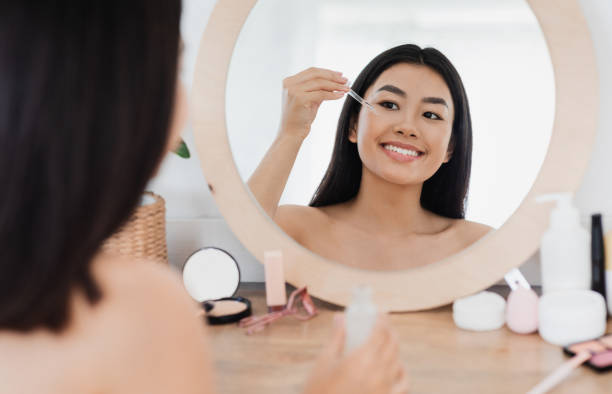Japanese vs Korean Skin Care Routine: Key Differences and What They Mean for Your Skin?
Japanese vs Korean Skin Care Routine: Key Differences and What They Mean for Your Skin?
Blog Article
Skincare enthusiasts worldwide adore Japanese and Korean beauty regimens for their distinct techniques, ideologies, and high-quality products. If you're in search of an intensely moisturizing routine or a simple yet effective regimen, both skincare practices have amazing advantages. But how do you choose which one is best for your skin? In this in-depth guide, we will dissect the Japanese vs Korean skincare regime, pointing out similarities and differences and how they affect your skin.

The Philosophy Behind Japanese and Korean Skin Care
Prior to discussing the steps, it is necessary to know the underlying principles of the skincare regimens.
Korean Skincare Philosophy
Korean skin care is all about getting that coveted "glass skin"— luminous, dewy, and smooth skin. The routine is built to nourish, hydrate, and build products in a strategic manner to optimize skin wellness. The Korean skin care routine typically has 7-10 steps, such as double cleansing, toning, essence, serums, and sheet masks. The focus is on utilizing hydrating and skin-restoring ingredients such as snail mucin, hyaluronic acid, and ceramides.
Japanese Skincare Philosophy
Japanese skincare, on the other hand, focuses on achieving "mochi skin"—a soft, plump, and youthful complexion. Simplicity is key, with an emphasis on purification, hydration, and skin barrier protection. The routine is generally shorter than the Korean routine, typically involving 4-6 steps. Japanese skin care products often use traditional, time-tested ingredients such as rice bran, camellia oil, and fermented extracts to provide gentle yet effective nourishment.
Step-by-Step Analysis: Japanese vs Korean Skin Care Routine
1. Cleansing
Korean Routine: Double cleansing is a necessity. It begins with an oil cleanser to take off makeup, sunscreen, and impurities, followed by a gentle foaming cleanser to thoroughly clean the skin without drying it out.
Japanese Routine: Double cleansing is also practiced, but Japanese cleansing oils are lightweight and infused with botanicals. Enzyme cleansers or micellar water are used in many Japanese beauty products for a milder cleansing experience.
2. Exfoliation
Korean Routine: Exfoliation is usually done with chemical exfoliants such as AHA, BHA, and PHA to eliminate dead skin cells and encourage cell turnover. It is generally done 2-3 times a week.
Japanese Routine: Japanese skincare uses mild exfoliation through natural products like rice bran, silk proteins, or enzyme powders to smooth skin texture without causing irritation.
3. Hydration & Toning
Korean Routine: Toning products hydrate the skin for enhanced penetration of the following products. Such toning products frequently include plant extracts, hyaluronic acid, and fermented products.
Japanese Routine: Japanese skincare does not use toner, but rather "lotions" or "softeners," which intensely moisturize the skin without disrupting its natural balance. Hada Labo's Gokujyun Lotion is a popular Japanese skin care product that provides intense moisturization.
4. Essence & Serums
Korean Routine: Essences are an essential part of Korean skincare, giving hydration and repairing benefits to the skin. Serums address particular issues such as pigmentation, fine lines, or acne.
Japanese Routine: Serums, or beauty liquids, are applied sparingly. Japanese skincare companies favor light but highly concentrated serums, which are frequently loaded with green tea, rice extracts, and collagen boosters.
5. Moisturizing
Korean Routine: Korean skincare encourages layering several moisturizers, including emulsions, creams, and sleeping masks, to hydrate skin all night long.
Japanese Routine: Japanese skincare emphasizes the use of one or two well-developed moisturizers, like light gels during summer and thicker creams during winter. Most of the top Japanese beauty products contain squalane, ceramides, and seaweed extracts for intense hydration.
6. Sunscreen
Both Routines: Sunscreen is a must in both Korean and Japanese skincare routines.
Japanese sunscreens are usually ultra-lightweight, water-resistant, and simple to apply, like the Biore UV Aqua Rich Watery Essence.
Korean sunscreens usually come with skincare advantages like extra moisturizing, soothing elements, and anti-aging benefits.
Japanese vs Korean Skin Care Routine: Which One is Right for You?
The choice between Japanese and Korean skincare would depend on your skin type, lifestyle, and personal preference.
If you love a detailed, multi-step regimen that lets you play with layering, Korean skincare is ideal for you.
If you want a low-key routine with proven ingredients and a simple but effective regimen, Japanese skincare could be the better option.
If you have sensitive skin, Japanese skincare's gentle and less layered approach may suit you best.
If you find yourself troubled with dryness or dehydrated, the Korean skin care routine emphasizing hydration will supply rich moisture and hydration.
Where to Find Japanese Skin Care Products in India?
Japanese skin care products are not very hard to find in India now, considering the various websites like Amazon, Nykaa, and standalone Asian beauty boutiques. Here are some top Japanese skin care products available in India:
Hada Labo Gokujyun Lotion – A deeply hydrating toner-lotion.
DHC Deep Cleansing Oil – A cleansing oil cult favorite.
SK-II Facial Treatment Essence – An elegant essence that adds radiance to the skin.
Biore UV Aqua Rich Watery Essence – Among Japan's best sunscreen offerings.
Conclusion
Both Japanese and Korean skincare routines have their unique strengths, and you don't have to choose just one! Most skincare enthusiasts combine things from both routines to develop a customized approach that works best for them. Whether you're looking for the best Japanese cosmetics or exploring K-beauty trends, knowing these key differences will assist you in making the best skincare decisions.
So, are you team Korean skincare or Japanese skincare? Or a little bit of both? Either way, spending in good-quality Japanese skin products and Korean beauty essentials will guarantee healthy, glowing skin for years to come!